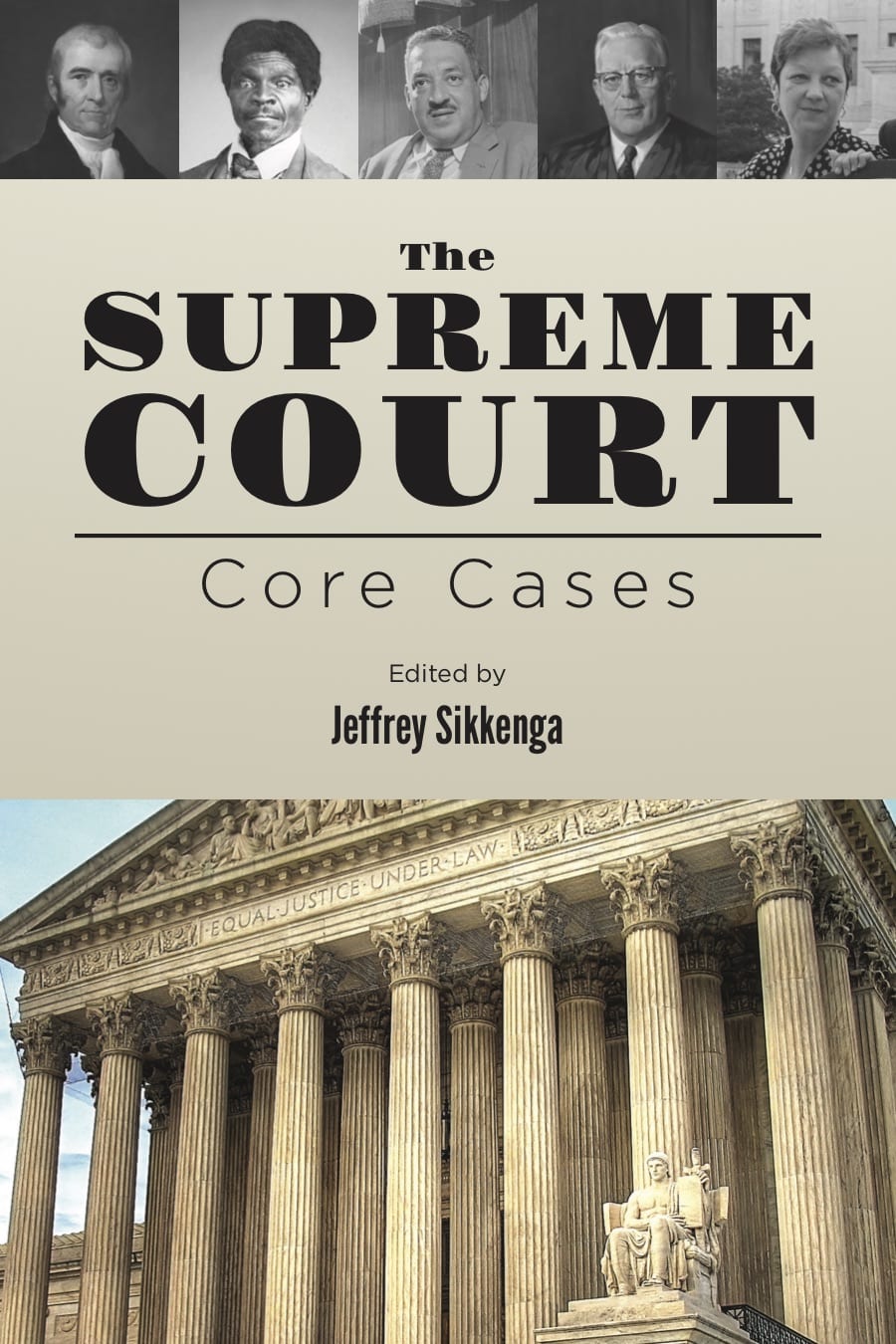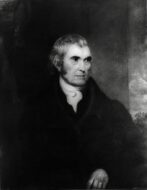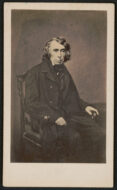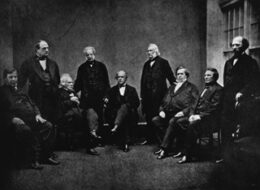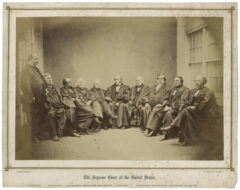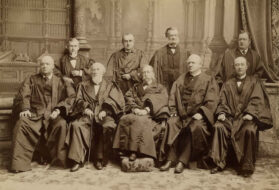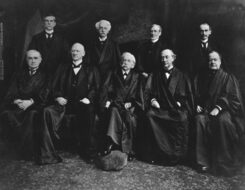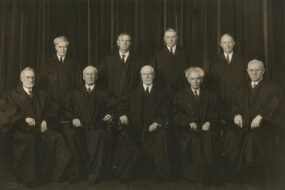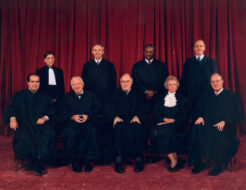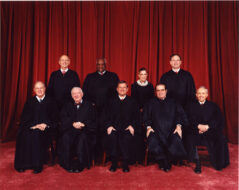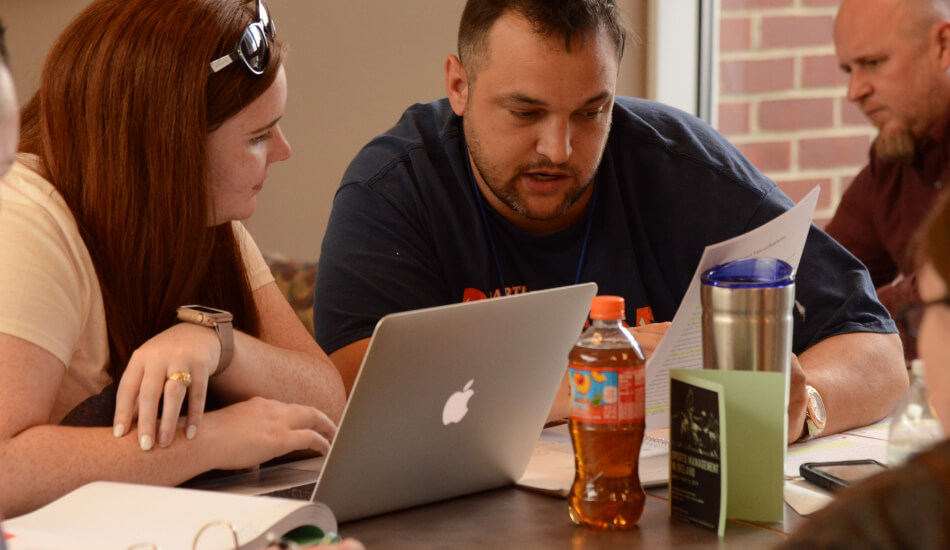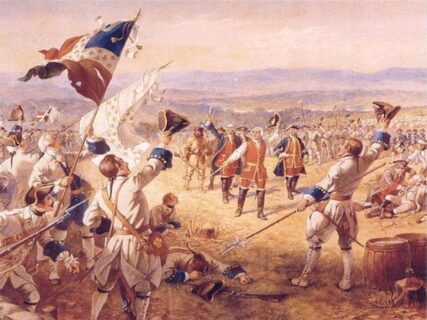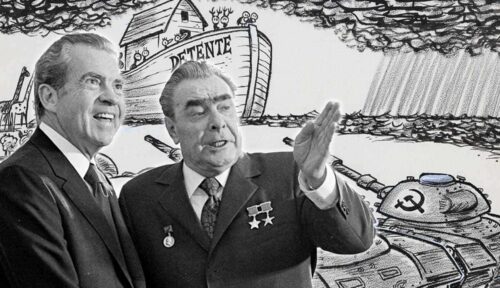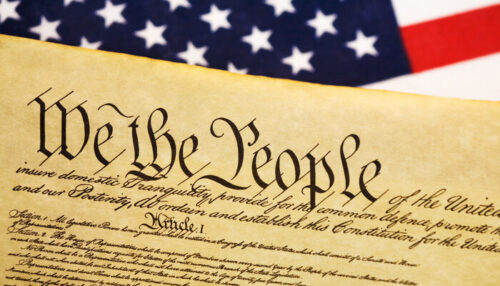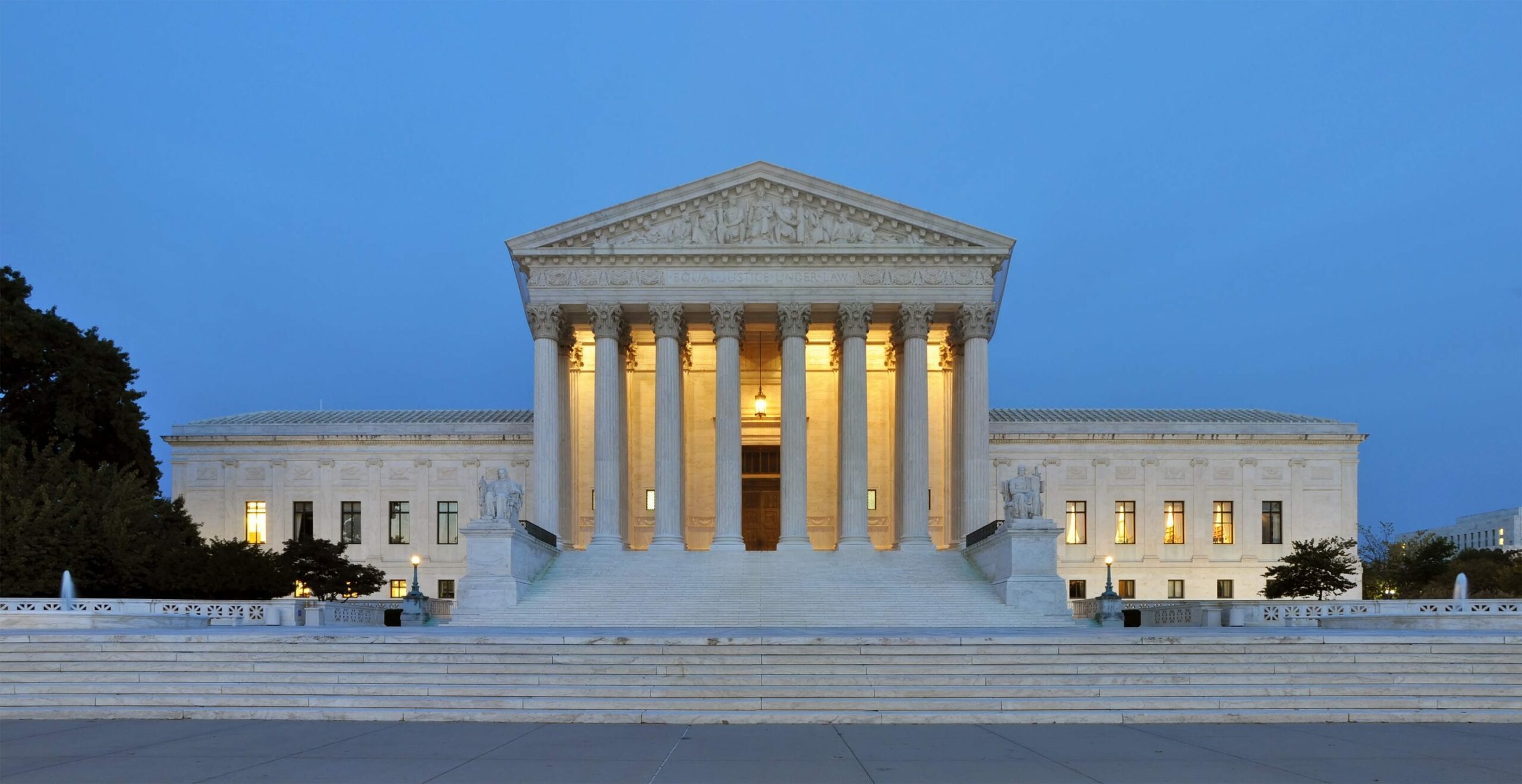
Supreme Court: Core Cases
This volume presents 25 core decisions of the Supreme Court. Arranged in chronological order, they are meant to illustrate the Court’s understanding not only of the Constitution, but also of itself as an institution. These decisions can help students, teachers, and citizens to enhance their own understanding of the Supreme Court.
That is a worthwhile endeavor because few American institutions are as misunderstood as the Supreme Court. Everyone knows who the president is and has some idea of what he does. Everybody also knows that Congress is – subject to the Constitution – supposed to make the laws for the country. But what is the Supreme Court’s job?
For many years, we have been told that the Court is supposed to tell the country what the Constitution means. Supreme Court opinions are, it is said, the final authoritative interpretation of the Constitution–unless the Court changes its mind or the decision is overturned by a Constitutional amendment. Not surprisingly, the Court also subscribes to this article of faith. In 1958, for example, the Justices unanimously declared that it is “settled doctrine” that “the federal judiciary is supreme in the exposition of the law of the Constitution”, which means that the Court’s interpretation of the Constitution “is the supreme law of the land.” As Justice Jackson put it in his concurrence in Brown v. Allen (1953): “We are not final because we are infallible, but we are infallible only because we are final.”
This has not always been America’s understanding of the Supreme Court. Article III of the Constitution simply declares that “the judicial Power of the United States, shall be vested in one supreme Court, and in such inferior Courts as the Congress may from time to time ordain and establish.” While the Constitution’s earliest critics predicted that one day the Court would become our constitutional oracle, the defenders of the Constitution articulated a coherent but limited view of the Court’s power. In The Federalist no. 78, Alexander Hamilton did not deny that the Supreme Court would have the power “to pronounce legislative acts void, because contrary to the constitution.” By “void”, however, Hamilton meant a judge “should pay no regard” to the law in the proceedings of his court – that is, the law would not operate inside a particular federal court. If the Supreme Court declared a law void, then the law would be inoperative in all federal courts, though not necessarily void for Congress or the executive in the exercise of their powers.
According to Hamilton, this kind of judicial review must be implied in the federal courts’ “judicial Power” because it is essential to “secure a steady, upright and impartial administration of the laws.” In a republic with a written constitution, judges must “regulate their decisions by the fundamental laws, rather than by those which are not fundamental.” The “complete independence of the courts of justice” is “peculiarly essential in a limited constitution,” but federal judges cannot maintain their proper independence if they must decide the legal case in front of them according to Congress’ or the president’s understanding of the Constitution, just as they cannot maintain their independence unless they hold their office during “good behavior” and receive pay that cannot be reduced while in office. Likewise, federal judges cannot dispense justice if they are bound to follow an unconstitutional law or executive action. Without judicial review, Hamilton warns, “all the reservations of particular rights or privileges [in the Constitution] would amount to nothing.”
In short, the Supreme Court’s power of judicial review was originally regarded as a constitutional shield to enable the federal judiciary “to defend itself” and the rights of citizens in federal courts. It was not a constitutional sword to be wielded by the Court to exclusively dictate the meaning of the Constitution to the rest of the country. Interpreting the Constitution is also a job for Congress, the president, the states, and ultimately the American people.
It is the hope of this volume that students, teachers, and citizens will read the decisions included here not to receive from the Supreme Court the meaning of the Constitution but to engage the Court – past and present – in a conversation about the meaning of our fundamental law. Such constitutional thinking is a vital act of self-government and essential to preserving American liberty and our great experiment in “government of the people, by the people, for the people.”
Documents by Topic
Cruel and unusual punishments
Establishment of religion
Freedom of speech
Interstate commerce
- Gibbons v. Ogden (1824)
- NLRB v. Jones & Laughlin Co. (1937)
- Wickard v. Filburn (1942)
- US v. Lopez (1995)
Judicial review
Liberty of contract
Necessary and proper
Presidential war powers
Privileges or immunities
Race and equal protection of the laws
Right to abortion
Right to counsel
Right to keep and bear arms
Self-incrimination
Slavery
Treaties and executive agreements
Unreasonable searches and seizures
Voting rights
Documents by Constitutional Provision
Article I: “All legislative Powers herein granted”
Interstate commerce (Article I, Section 8, clause 3)
- Gibbons v. Ogden (1824)
- NLRB v. Jones & Laughlin Co. (1937)
- Wickard v. Filburn (1942)
- US v. Lopez (1995)
“Necessary and proper” (Article I, Section 8, clause 18)
Article II: “The executive Power”
Treaties and executive agreements
War powers (Article II, Section 2, clause 1)
- The Prize Cases (1863) [Commander-in-chief ]
- Ex Parte Milligan (1866) [Citizens’ rights ]
- Korematsu v. US (1944) [Citizens’ rights ]
Article III: “The Judicial Power”
Power of judicial review (Article III, Section 1)
Article IV
“all needful Rules and Regulations” for “Territory . . . belonging to the United States” (Article IV, Section 3, clause 2)
Amendment I
“establishment of religion”
“freedom of speech”
Amendment II
“right to keep and bear arms”
Amendment IV
“unreasonable searches and seizures”
Amendment V
“compelled . . . to be a witness against himself ”
Amendment VI
“assistance of counsel”
Amendment VIII
“cruel and unusual punishments”
Amendment XIV
“privileges or immunities” (Amendment XIV, Section 1)
“due process of law” (Amendment XIV, Section 1)
“equal protection of the laws” (Amendment XIV, Section 1)
For each of the documents in this collection, we suggest questions relevant for that document alone (questions A) and questions that require comparison between documents (questions B).
1. Marbury v. Madison, February 24, 1803
A. How does Chief Justice Marshall argue that the Supreme Court has the authority to declare a law constitutional or unconstitutional? Does he argue that this authority is explicitly given in the Constitution, or does it derive logically from the authority given to the Court in the Constitution?
B. On what grounds has the Court declared laws constitutional or unconstitutional? Consider, for example, Gibbons v. Ogden, The Slaughterhouse Cases, Lochner v. New York, Brown v. Board of Education, and Roe v. Wade.
2. McCulloch v. Maryland, March 6, 1819
A. According to Marshall, from where does the Constitution derive its powers? How does this affect both his interpretation of Congress’ “necessary and proper” powers and his view that Maryland cannot tax the national bank? Based on Marshall’s argument, what are the limits of Congress’ “necessary and proper” powers?
B. Compare the Court’s reasoning in this case with its reasoning in United States v. Lopez. How does the Court think about the extent of the federal government’s power?
3. Gibbons v. Ogden, March 2, 1824
A. According to Chief Justice Marshall, why should the Constitution not be given a “narrow construction”? With a properly capacious interpretation, what does Article I of the Constitution mean by “regulate,” “commerce,” and “among”? Given those meanings, how far does Congress’s power to regulate commerce among the several states extend? What other, narrower meanings could those words have had? Finally, according to Justice Johnson in his concurrence, why is Congress’s interstate commerce power not simply “plenary” (i.e., superior to the states’ regulatory power) but “exclusive” (i.e., belonging only to Congress)?
B. Compare Chief Justice Marshall’s arguments to those in the opinions in Wickard v. Filburn and United States v. Lopez. Is the understanding of the Commerce Clause the same in all three cases? If not, how do they differ? Do they differ based on the text of the Constitution, or because of different understandings of the role and character of commerce in American life?
4. Dred Scott v. Sandford, March 6, 1857
A. What evidence does Chief Justice Taney use to show that the American Founders did not include slaves or their descendants as citizens? Why does Taney conclude that members of the “enslaved African race” were excluded from the claim of the Declaration of Independence that “all men are created equal”? How does the Constitution guarantee the right to property in slaves according to Taney?
B. How does the Court’s reasoning in this case differ from its reasoning in Plessy v. Ferguson and Brown v. Board of Education? Are the differences the result of different interpretations of the Constitution, historical facts surrounding its drafting, or changed conceptions of the reach and meaning of the term “equality”?
5. The Prize Cases, March 10, 1863
A. According to the majority, why did Lincoln have the constitutional power to issue the blockade and confiscation orders under the laws of war, even though Congress had not yet declared war? How sweeping is the president’s power to act under the laws of war? In the dissent’s view, how is the president’s power to act militarily limited by Congress’s power to declare war? Constitutionally speaking, what kind of military action could Lincoln engage in, according to the dissent?
B. Can this understanding of the president’s war powers be reconciled with the majority opinion in Ex parte Milligan, decided only three years later? If so, how?
6. Ex parte Milligan, April 3, 1866
A. According to the Court, why (and where) does the president not have the power to establish military tribunals for American citizens, even during a time of civil war? What note of caution does the concurrence add to the Court’s opinion? According to the concurrence, why could Congress authorize such military commissions even where civilian courts are open and operating?
B. Can this understanding of the president’s war powers be reconciled with the majority opinion in The Prize Cases, which was decided only three years earlier? If so, how?
7. The Slaughterhouse Cases, April 14, 1873
A. According to the majority, what was the purpose of the Fourteenth Amendment? How does that purpose inform the majority’s interpretation of the “privileges or immunities” clause? In the majority’s view, what additional rights of American citizens does the “privileges or immunities” clause protect that were not previously protected under the similar clause in Article IV, section 2 of the Constitution? According to Justice Bradley’s dissent, how does the Fourteenth Amendment change (or at least clarify) what makes someone an American citizen? Since people are now American citizens first, and then citizens of their state, why are they protected against having their fundamental rights violated by both the federal and state governments? In the view of Justice Swayne’s dissent, how were the Thirteenth, Fourteenth, and Fifteenth Amendments intended to change the relationship between the states and the federal government?
B. What has been the Court’s reasoning about the reach of the Fourteenth Amendment and the meaning of its various provisions? Consider Plessy v. Ferguson, Lochner v. New York, Brown v. Board of Education, Reynolds v. Sims, and Roe v. Wade.
8. Plessy v. Ferguson, May 18, 1896
A. Why does Justice Brown decide that the Louisiana statute in question does not violate the Thirteenth and Fourteenth Amendments? Why does Brown make a distinction between civil or political equality and social equality? Why do the Thirteenth and Fourteenth Amendments make the Constitution “color-blind” according to Harlan?
B. Was Justice Harlan right to compare the Court’s decision in this case to the Dred Scott decision?
9. Lochner v. New York, April 17, 1905
A. In the majority’s view, what is the “right of contract”? According to the Court, why is the New York law not a reasonable regulation of that right? Why does Justice Harlan believe that the Court should give New York the benefit of the doubt and conclude that the law is a reasonable exercise of its “police powers”? How does Justice Holmes break from not only the majority but also the other dissenters? What does Holmes mean in his dissent when he says that the Court’s decision is based not on constitutional principles but on “an economic theory”?
B. How is the idea of “due process of law” used in Lochner and in Roe v. Wade?
10. National Labor Relations Board v. Jones & Laughlin Steel Corp., April 12, 1937
A. According to the majority, why can the federal government regulate local activities that have a “close and substantial” relation to interstate commerce? How does Jones & Laughlin’s firing of the workers meet this “substantial effects” test? In the dissent’s view, why must Congress’s power be limited only to interstate commerce itself and to local activities that have a “direct and material” effect on such commerce?
B. How does the majority’s reasoning in this case differ from the unanimous decision in Wickard v. Filburn? How important are the facts of the cases in explaining the different opinions?
11. United States v. Belmont, May 3, 1937
A. According to the Court, why can the president make legally binding agreements with other countries? Are there any limits to the president’s power to make executive agreements? In the view of the three concurring justices, why was it unnecessary for the Court to decide whether an executive agreement is like a treaty in being able to overpower a conflicting state law?
B. How does the Court’s thinking about presidential powers in Belmont compare to its reasoning about these powers in The Prize Cases, Ex parte Milligan, and Korematsu v. United States?
12. Wickard v. Filburn, November 9, 1942
A. In the Court’s view, why does it not matter whether the local production to be regulated by Congress is part of the “flow of commerce”? Based on this decision, are there any local economic activities that are beyond the scope of Congress’ power? If so, what would they be?
B. According to the Court, how does its interpretation of the Commerce Clause follow the precedent established by Gibbons v. Ogden?
13. Korematsu v. United States, December 18, 1944
A. According to Justice Black, where must the president get his power to act even in an emergency? Why? What is the view of Justice Jackson on the three levels of presidential power and how they apply to this situation? What is the position of the other concurrences on whether the president has inherent emergency power? According to the dissent, what do constitutional principles and historical examples show about the power of the president to act in an emergency? In the dissent’s view, why is this case not about President Truman making law but about him enforcing it?
B. How does the Court’s reasoning in Korematsu compare with its view of the president’s war powers in The Prize Cases and Ex parte Milligan?
14. Brown v. Board of Education, May 17, 1954
A. According to the Court, why do “separate but equal” educational facilities inherently violate “equal protection of the laws”? Would the same reasoning apply to other racially segregated facilities?
B. Why do you think the Court did not simply adopt John Marshall Harlan’s dissent in Plessy v. Ferguson, which declared that all racially segregated public facilities violate equal protection of the laws because “our constitution is color-blind, and neither knows nor tolerates classes among citizens”?
15. Roth v. United States, June 24, 1957
A. Why is obscenity not protected speech, according to Justice Brennan? How should a court determine what is obscene? In the view of Justice Harlan, why does the federal government not have the power to ban obscenity but the states do? According to Justice Douglas’s dissent, why must obscenity be protected under freedom of speech?
B. The First Amendment protects freedom of both speech and religion. Does the Court think differently about religious liberty and free speech? Compare the Court’s reasoning in Roth with its reasoning in Schempp.
16. Gideon v. Wainwright, March 18, 1963
A. Why did the Court reach a conclusion in Gideon different from the one it reached 21 years before in Betts? What point is Justice Harlan making in his concurring opinion?
B. Considering Gideon and Miranda v. Arizona, how would you explain what the Court means by “due process of law”?
17. Abington School District v. Schempp, June 17, 1963
A. According to the Court, why does the Establishment Clause forbid government-mandated Bible reading in school, even if students are not required to participate? In the Court’s view, what is the test for whether a law violates the Establishment Clause? According to Justice Douglas’s concurrence, how else did the law violate the Constitution? In Justice Brennan’s view, why should the Court not interpret the Establishment Clause by trying to find the original intent of the Founders? According to Justice Stewart’s dissent, how is the Court’s decision showing hostility toward the majority’s “free exercise” of religion?
B. The First Amendment protects freedom of both speech and religion. Does the Court think differently about religious liberty and free speech? Compare the Court’s reasoning in Roth with its reasoning in Schempp.
18. Reynolds v. Sims, June 15, 1964
A. According to Chief Justice Warren, why do state legislative districts with radically different populations violate the “equal protection of the laws”? How important are “modern” ideas of representative government in Warren’s interpretation of the Fourteenth Amendment? In Justice Clark’s concurrence, how did the Court go beyond what was necessary to decide this case in favor of Sims? According to Justice Harlan’s dissent, why is the majority’s decision troubling both for the way that the Court should interpret the Fourteenth Amendment and for its effect on the proper constitutional balance between state legislatures and the courts?
B. Is there a difference between the Court’s understanding of equality before the law in Reynolds and Bakke?
19. Miranda v. Arizona, June 13, 1966
A. Does the Court’s opinion make a good case that the Fifth Amendment right not to incriminate one’s self requires the warnings to suspects required by Miranda? On what basis do the dissenters object to the Court’s ruling? Who has the better argument?
B. Considering Gideon and Miranda v. Arizona, how would you explain what the Court means by “due process of law”?
20. Katz v. United States, December 18, 1967
A. According to the Court, why is it incorrect to think about the Fourth Amendment in terms of “constitutionally protected areas”? Why is the trespass doctrine articulated in Olmstead v. United States (1928) not an adequate rule for interpreting the Fourth Amendment? How does Justice Harlan’s concurrence help to clarify the Court’s interpretation of what constitutes a search or seizure? According to Justice Black’s dissent, what are the two fundamental reasons why the Supreme Court should continue to interpret the Fourth Amendment according to the trespass doctrine?
B. Considering the court’s arguments in Katz and Roe v. Wade, why do you think the court developed the doctrine of a right to privacy or a reasonable expectation of privacy even though such a right is not found in the Constitution? Is a right to privacy implied in some explicit statements in the Constitution?
21. Roe v. Wade, January 22, 1973
A. According to the majority, where does the right to abortion come from? How does Justice Stewart disagree in his concurrence? In the Court’s opinion, why is the right to abortion not absolute? What limitations can a state impose? According to the dissents, why should the Court not have declared a constitutional right to abortion?
B. When you consider the court’s rulings in Roe and in Heller, do you think the court is ruling based on legal considerations or more on moral and political considerations? Is it wrong for the court to take into account or even base its rulings on moral and political considerations?
22. Gregg v. Georgia, July 2, 1976
A. What arguments do the justices make for upholding the constitutionality of the death penalty in Gregg? In what ways does the concurrence of Justice White differ from the opinion of Justice Stewart? On what grounds did Justices Brennan and Marshall dissent from the court’s opinion?
B. Some critics of the court claim that it substitutes it’s views of what is morally or politically correct for those of the American people. Do you see evidence of this in Gregg, Roe, Heller, or Bakke? Would it be wrong for the Court to do this? If so, why?
23. University of California Regents v. Bakke
A. According to Justice Powell, why is it acceptable for universities to use race as one factor in admissions but not to employ a racial quota system? What is “discrimination,” according to Powell? In the view of Justice Brennan, why does the Fourteenth Amendment’s principle of equality permit the Medical School’s admission system? Why was Bakke not discriminated against? According to Justice Stevens, why is it clear that the program violated Title VI?
B. Do the competing opinions in Bakke use the same understanding of “equal protection,” or do they have different notions of what “equality” means under the Constitution? Is this also true in Plessy, Brown, and Reynolds?
24. United States v. Lopez, April 26, 1995
A. According to the Court, what are the three categories of activity that Congress can regulate under its interstate commerce power? Why does the action of Lopez not fall into one of those? According to Justice Thomas’s concurrence, why does the original meaning of the commerce power require the Court to reconsider the “substantial effects” test articulated in cases like Wickard v. Filburn (1942)? In the view of the dissenters, why does the Act fall “well within” the scope of Congress’s commerce power as it has been understood by the Court since 1942?
B. In this collection, four cases deal with the commerce clause: Gibbons, National Labor Relations Board v. Jones & Laughlin Co., Wickard, and Lopez. Has the court’s interpretation of the commerce clause changed over time? If so, how has it changed? Why do you think it changed?
25. District of Columbia v. Heller
A. According to the Court, why does the Second Amendment protect an individual right to possess firearms in the home for self-defense? In the Court’s view, what is the relationship between the two clauses of the Amendment—the prefatory “militia” clause and the operative “right of the people” clause? On that basis, why must the DC law be struck down? According to Justice Stevens’s dissent, why should the relationship between the two clauses be read in exactly the opposite way? According to Justice Breyer, why should the Court uphold Washington DC’s handgun ban even if the Court is right about the meaning of the Second Amendment?
B. When you consider the court’s rulings in Roe and in Heller, do you think the court is ruling based on legal considerations or more on moral and political considerations? Is it wrong for the court to take into account or even base its rulings on moral and political considerations?
Ackerman, Bruce. The Failure of the Founding Fathers : Jefferson, Marshall, and the Rise of Presidential Democracy. Cambridge: Belknap Press, 2005.
Amar, Akhil. America’s Constitution: A Biography. New York: Random House, 2005.
————. The Bill of Rights : Creation and Reconstruction. New Haven: Yale, 1998.
Bickel, Alexander. The Least Dangerous Branch: The Supreme Court at the Bar of Politics. New Haven, Yale: 1986.
Clinton, Robert Lowery. Marbury v. Madison and Judicial Review. Lawrence, KS: University Press of Kansas, 1989.
Ely, John Hart. Democracy and Distrust: A Theory of Judicial Review. Cambridge: Harvard University Press, 1980.
Garraty, John A. Quarrels That Have Shaped the Constitution. Rev. Edition. New York: Harper, 1975.
Gillman, Howard. The Constitution Besieged: The Rise & Demise of Lochner Era Police Powers Jurisprudence. Durham: Duke University Press, 1995.
Graber, Mark A. Dred Scott and the Problem of Constitutional Evil. New York: Cambridge University Press, 2008.
Kahn, Ronald and Ken Kersch, eds., The Supreme Court and American Political Development. Lawrence: University of Kansas Press, 2006.
Keck, Thomas M. The Most Activist Court in History: The Road to Modern Judicial Conservatism. Chicago: University of Chicago Press, 2004.
Klarman Michael J., From Jim Crow to Civil Rights: The Supreme Court and the Struggle for Racial Equality. New York: Oxford University Press, 2006.
Kurland, Philip B, and Ralph Lerner. The Founders’ Constitution, Volume 1: Major Themes. Indianapolis: Liberty Fund, 1987.
Rosenberg, Gerald. The Hollow Hope: Can Courts Bring About Social Change? Second Edition, Chicago: University of Chicago Press, 2008.
Smith, Jean Edward. John Marshall: Definer of a Nation. NY: Holt Paperbacks, 1998.
Van Cleve, George William. A Slaveholder’s Union: Slavery, Politics, and the Constitution in the Early American Republic. Chicago: University of Chicago Press, 2010.
Whittington, Keith E. Constitutional Interpretation: Textual Meaning, Original Intent, and Judicial Review. Lawrence: University of Kansas Press, 1999.
————. Political Foundations of Judicial Supremacy: The Presidency, the Supreme Court, and Constitutional Leadership in U. S. History. Princeton: Princeton University Press, 2007.

